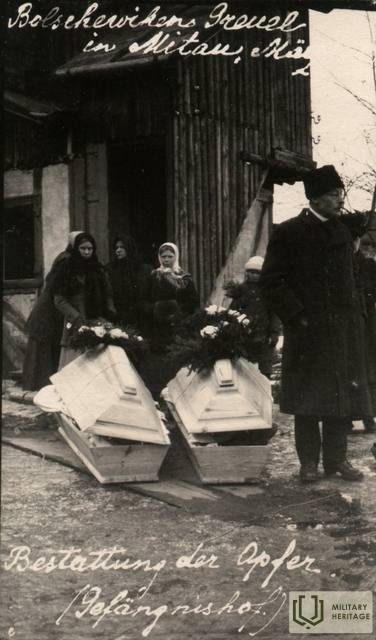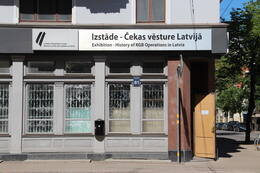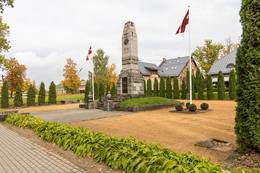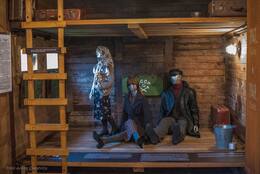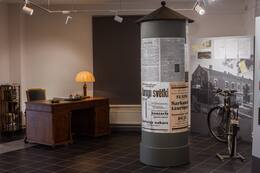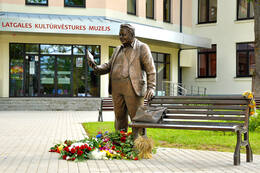Roter Terror
I Erster Weltkrieg, I Unabhängigkeitskriege
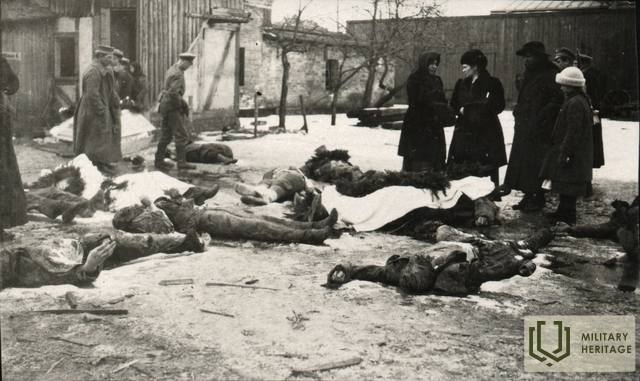
Der Rote Terror ist eine formelle Politik, die am 5. September 1918 durch ein Dekret der Regierung des an der Macht befindlichen bolschewistischen Regimes - des in Russland an der Macht befindlichen Rates der Volkskommissare (TKP) - angekündigt wurde: die gezielte und legitime Inhaftierung von Häftlingen Beweis der Schuld. Am 6. November, dem Tag vor dem Jahrestag der Oktoberrevolution, wurde der Rote Terror offiziell beendet. Die brutale Repression gegen imaginäre und reale Gegner des bolschewistischen Regimes ging jedoch weiter und verband das Ende des Roten Terrors normalerweise mit dem Ende des russischen Bürgerkriegs im Jahr 1922.
Der offizielle Grund war die erfolglose Ermordung Lenins durch die Sozialrevolutionärin Fania Kaplan (1890-1918), bei der der bolschewistische Führer verletzt wurde. Nach der Nachricht von der Ermordung Lenins rief das Allrussische Zentralexekutivkomitee zu einem rücksichtslosen Massenterror gegen die Feinde der Revolution auf. Eine formelle Entscheidung über den Ausbruch des Roten Terrors wurde jedoch von der sowjetisch-russischen Regierung, dem Rat der Volkskommissare (TKP), am 5. September 1919 getroffen. Die Hauptinstitution, die den Roten Terror ausführte, war die Allrussische Notstandskommission und ihre verschiedenen repressiven Strukturen sowie bolschewistische Aktivisten auf eigene Initiative. Bereits am ersten Tag des Roten Terrors wurden in Petrograd mehr als 500 vom Regime unerwünschte oder einfach „verdächtige“ (zu gut gekleidete oder als intelligente Offiziere, ehemalige Beamte oder einfach wohlhabende Leute bekannte Menschen) getötet. Insgesamt wurden in den Jahren dieser Politik mehr als 1.200.000 Menschen getötet.
Einer der Autoren und Hauptideologen der Idee war der bemerkenswerte Tschekist Mārtiņš Lācis (Jānis Sudrabs; 1888-1938), der dieses Konzept entwickelte und populär machte: „Wir kämpfen nicht gegen Einzelpersonen. Wir zerstören die Bourgeoisie als Klasse Suche nach Material und Beweisen in den Ermittlungen „Die erste Frage, die Sie ihm stellen müssen, ist, welcher Schicht er angehört, seiner Herkunft, Erziehung, Ausbildung oder seinem Beruf. Diese Fragen müssen auch das Schicksal des Angeklagten bestimmen. Das ist der Sinn und das Wesen des roten Terrors."
Im Herbst 1918 wurde ein anderer Lette, Jēkabs Peters, stellvertretender Leiter der Tschechischen Republik, Felix Dzerzhinsky. In dieser Zeit arbeiteten mehrere hundert Letten in der tschechischen Maschine. Andererseits wurden auch viele Letten von den Bolschewiki getötet, und viele, wie Mitglieder des Lettischen Provisorischen Nationalrates, mussten sich verstecken oder aus Russland fliehen, um ihr Leben zu retten. Nach dem Einmarsch der Bolschewiki in Lettland im November 1918 begann auch hier der Rote Terror, der mindestens 2-3.000 Menschen das Leben kostete. In jedem Bezirk Lettlands richteten die Bolschewiki revolutionäre Tribunale ein; mehrere Konzentrationslager wurden errichtet (das größte in Pļaviņas); Die unerwünschten Personen des Regimes wurden von der Geheimpolizei der Bolschewiki - politischen Unterabteilungen - gejagt. Im Frühjahr 1919 begannen in Lettland Massenhinrichtungen. Tausende von Menschen wurden als Geiseln genommen und in Dreck und Epidemien (Grippe, Typhus usw.) gefangen gehalten.
Weitere Informationsquellen
https://vesture.eu/Sarkanais_terors
https://www.lsm.lv/raksts/dzive--stils/vesture/kas-un-kapec-jazina-par-sarkano-teroru-krievijas-pilsonu-kara-laika.a291271/
https://www.dveseluputenis.lv/lv/laika-skala/notikums/107/bads-un-sarkanais-terors-kurzeme-un-vidzeme/
Zugehörige Zeitleiste
Zugehörige Objekte
Ausstellung zur Geschichte des KGB in Lettland im sog, “Eckhaus”
Das Gebäude der ehemaligen „Tscheka“ – des Staatssicherheitskomitees der UdSSR (später KGB) – in Riga ist heute öffentlich zugänglich. Hier wurden lettische Bürger von im Volksmund so genannten Tschekisten festgehalten, verhört und umgebracht, weil sie das Besatzungsregime als Gegner betrachtete. In dem Gebäude ist heute eine Ausstellung des Lettischen Okkupationsmuseums über die Aktivitäten des KGB in Lettland untergebracht. Es werden Führungen durch Zellen, Gänge, Keller und den Innenhof angeboten. Das Haus wurde 1911 erbaut und zählt zu den schönsten Bauten in Riga. Im Volksmund als „Eckhaus“ bekannt, wurde es zum schrecklichen Symbol des sowjetischen Besatzungsregimes in Lettland - eine der Stützen der Sowjetmacht. Die Tscheka nutzte das „Eckhaus“ während der sowjetischen Besatzung 1940/41 und dann erneut von 1945 bis 1991. Zehntausende Einwohner Lettlands waren von politischer Verfolgung direkt betroffen. Das harte Vorgehen gegen Gegner der sowjetischen Herrschaft wurde auch nach dem Zweiten Weltkrieg fortgesetzt. Nach Stalins Tod änderten sich die Methoden des KGB unwesentlich. An die Stelle von physischer Folter trat nun Psychoterror. Die Mehrheit der Tscheka-Agenten bestand aus ethnischen Letten (52 %). Russen bildeten mit 23,7 % die zweitgrößte Gruppe. 60,3 % der Mitarbeiter gehörten nicht der Kommunistischen Partei an, 26,9 % verfügten über einen Hochschulabschluss. Das System war darauf ausgerichtet, die lokale Bevölkerung einzubinden und so die Kontrolle über die Gesellschaft zu erlangen. Die Korrespondenz und die Akten der KGB-Mitarbeiter befinden sich heute in Russland. Sie sind für lettische Behörden und Historikern nicht zugänglich.
Denkmal für die gefallenen Helden der Gemeinde Gulbene in Lettland
Das Hotel liegt im historischen Zentrum von Gulbene, gegenüber der evangelisch-lutherischen Kirche von Gulbene.
Denkmal für die Opfer der Unruhen von 1905, die im Ersten Weltkrieg und im lettischen Unabhängigkeitskrieg gefallenen Mitglieder der Gulbene-Gemeinde und die Opfer des Maliena-Tribunals. Das Denkmal wurde von E. Ābeltiņš entworfen und 1929 vor der evangelisch-lutherischen Kirche von Gulbene eröffnet. Nach dem Zweiten Weltkrieg wurde auf dem Denkmal ein fünfzackiger Stern angebracht, dann wurde auf seinen Fundamenten ein Gipsbild eines sowjetischen Soldaten in Bronze gemalt und hinter dem Denkmal ein Friedhof für gefallene sowjetische Soldaten errichtet. Als 1969 die neuen Friedhöfe der im Zweiten Weltkrieg gefallenen sowjetischen Soldaten im Spārīte-Park eröffnet wurden, wurden die Überreste der Gefallenen dorthin transportiert, aber der Standort des Denkmals wurde dem Erdboden gleichgemacht. Im Herbst 1989 wurden die Fundamente des Denkmals ausgegraben und die 1928 darin eingebaute Kapsel mit dem Text ausgegraben. Das Denkmal wurde 1992 restauriert (Bildhauer O. Feldbergs).
Zwischen dem 24. Dezember 1918 und dem 31. Mai 1919, als das 1. (4.) Valmiera-Infanterie-Regiment Gulbene von den Bolschewiki befreite, befanden sich das Revolutionskriegsgericht von Maliena (Vecgulbene) und der Arbeiterklub in der Kirche. Es zeichnete sich durch die Härte seiner Entscheidungen und die hohe Zahl von Todesurteilen aus, oft wegen geringfügiger Delikte, in denen 349 Fälle untersucht und 606 Personen angeklagt wurden.
Eine Gedenkskulptur ist zu sehen.
Gedenkmuseum-Deportationswaggon am Bahnhof Skrunda
Zur Erinnerung an die sowjetischen Deportationen vom Juni 1941 und März 1949 wurden am Bahnhof Skrunda ein Gedenkstein und ein vierachsiger Eisenbahnwaggon als Gedenkmuseum für die Verschleppten errichtet. Es handelt sich hier um den ersten Waggon in Lettland, in dem eine ständige Ausstellung eingerichtet wurde. Sie umfasst Fotos, Briefe, Zeitzeugenberichte und Dokumente der vom Bahnhof Skrunda aus Deportierten sowie verschiedene von ihnen selbst hergestellte Gebrauchsgegenstände. Der Bahnhof Skrunda war eine Sammelstelle für die zur Deportation bestimmten Menschen, eine der drei Bahnstationen des Kreises, zu der Einwohner sowohl aus Skrunda als auch aus der Umgebung von Kuldīga gebracht wurden. 1941 wurde auch die Familie von Guntis Ulmanis, dem ersten Präsidenten der wiederhergestellten Republik Lettland, von hier aus nach Sibirien in die Region Krasnojarsk verbracht.
Ausstellung "Lettische Armee in Pļaviņas im 20. Jahrhundert"
Befindet sich in der Odzienas-Straße 2, Pļaviņas.
Zu sehen ist die Dauerausstellung „Lettische Armee in Pļaviņas im 20. Jahrhundert“.
Das Gebäude in Pļaviņas, Odzienas-Straße 2, hat eine lange Geschichte – von der Zeit, als der Stukmaņi-Großhändler Hugo Apeltofts darin eine aktive wirtschaftliche Tätigkeit aufnahm und so die Entwicklung der Stadt Pļaviņas förderte, bis hier während des 20. Jahrhunderts das Hauptquartier der lettischen Ostfront errichtet wurde Unabhängigkeitskrieg. 1919 wurden die Aktivitäten lettischer Armeeeinheiten gegen die Rote Armee in Latgale direkt von Pļaviņas aus kommandiert.
1934 wurde in der Nähe dieses Hauses eine Gedenktafel mit der Inschrift enthüllt: "1919 befand sich in diesem Haus das Hauptquartier der Ostfront, und hier übernahm General Jānis Balodis das Kommando über die lettische Nationalarmee." Es wurde 1940 von den Sowjets entfernt und zerstört, aber am 16. Juni 1990 mit Unterstützung der LNNK-Niederlassung Plavinas wiederhergestellt.
Heute befindet sich neben dem ehemaligen Hauptquartier ein Gedenkstand, der 15 Kavalleristen des Lāčplēsis-Militärordens gewidmet ist, die in der Region Pļaviņas geboren wurden.In Pļaviņas gibt es einen Einblick in die Lebensgeschichten der Ritter des Lāčplēsis-Kriegsordens.
Unweit des Ausstellungsgebäudes befindet sich das Hauptquartier der Latgale-Division, das 1913 von Graf Teodors Medems als Likörfabrik von Stukmaņi erbaut wurde. 1919 wurde es vom Regime von P. Stučka übernommen, wo es auch ein Gefängnis eingerichtet hatte. Nach der Vertreibung der Bolschewiki wurde das Gebäude 1925 von der lettischen Armee übernommen, die das Hauptquartier der Division Lettgallen beherbergte. 10 Generäle und andere Offiziere der lettischen Armee verbrachten ihre militärische Laufbahn in diesem Gebäude. 1940 wurde das Gebäude von der Roten Armee übernommen. In den Nachkriegsjahren beherbergte es eine Schule sowie eine Gemeinde. Um 1970 wurde das Gebäude von der Produktionsvereinigung "Rīgas Apīrsbs" genutzt.
Besuche der Ausstellung müssen im Voraus telefonisch unter T. 28442692 gebucht werden.
Kulturhistorisches Museum von Lettgallen
Das Kulturhistorisches Museum von Lettgallen in Rēzekne hat drei Dauerausstellungen. Eine davon – „Rēzekne im Wandel der Zeit“ – erzählt die Geschichte der Stadt über sieben Jahrhunderte. Ein großer Teil ist den Ereignissen, Krie gen und Veränderungen des 20. Jahrhunderts gewidmet: Der Erste Weltkrieg, der Unabhängigkeitskrieg, der Zweite Weltkrieg, die Zerstörung von Rēzekne im Jahr 1944 durch sowjetische Bomber und das Kriegsgefangenenlager Sta lag 347. Die Ausstellung enthält Fotos über die Schicksale von Soldaten aus Rēzekne während des Krieges. Während des lettischen Freistaats waren die Soldaten des 9. Infanterieregiments Rēzekne der lettischen Armee ein fester Bestandteil des öffentlichen Lebens und der Sport veranstaltungen der Stadt, insbesondere während der Feierlichkeiten am 11. und 18. November.




